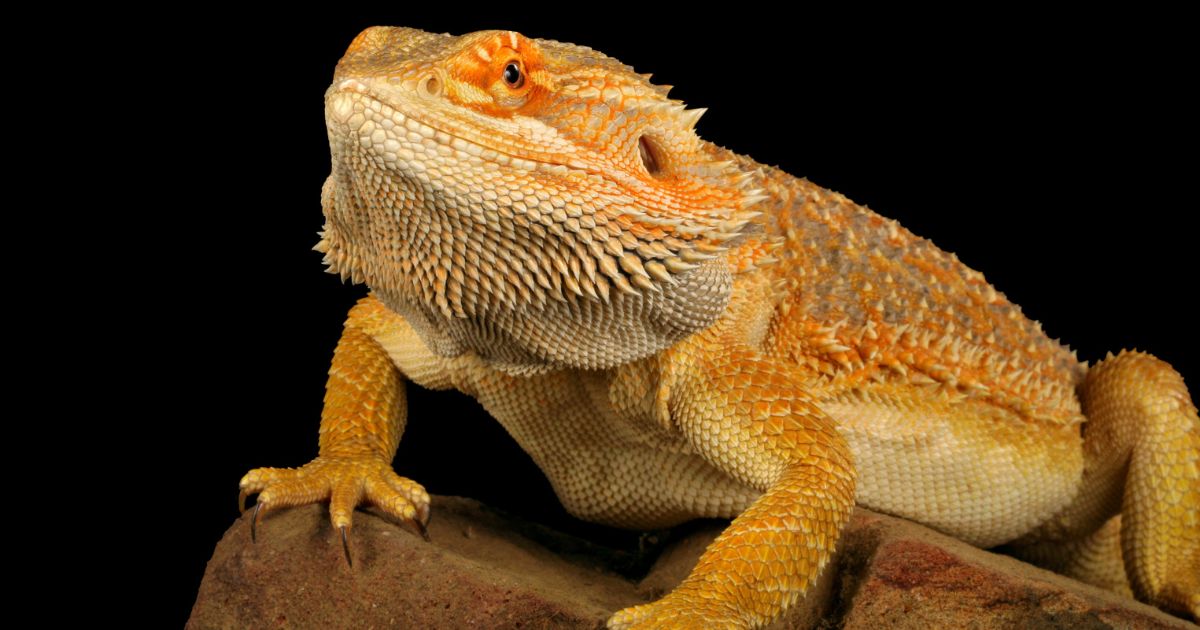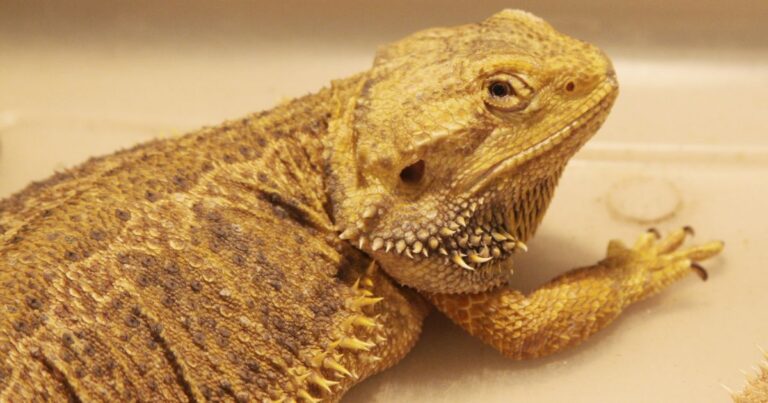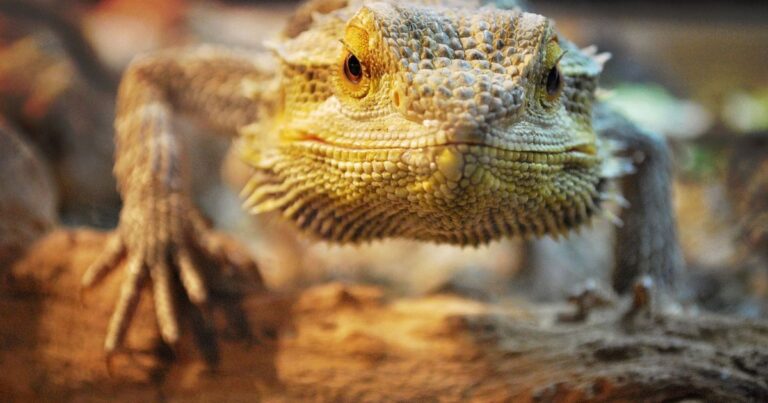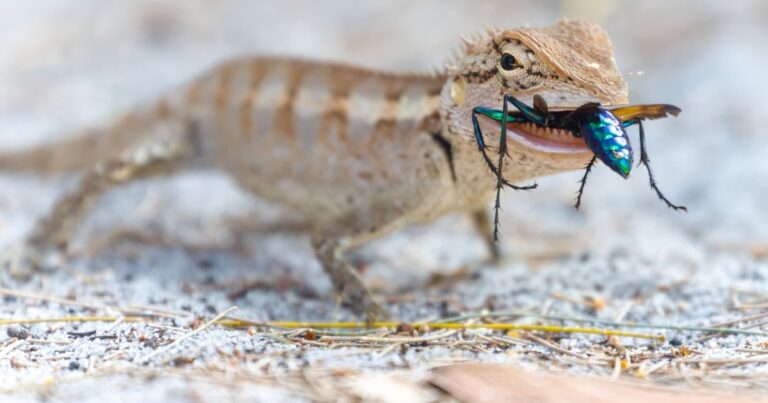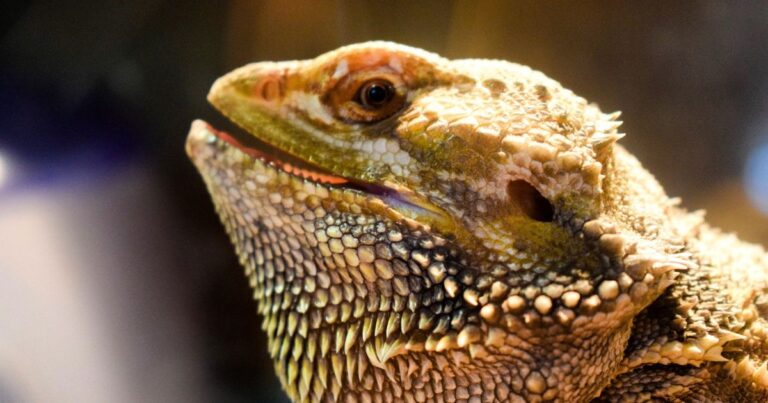Bearded Dragon Diet
Table of Contents
Are you curious about the Bearded Dragon Diet? Well, you’re in luck because this article is your ultimate guide to feeding these scaly creatures. From nutritious greens to delicious treats, we’ll explore everything you need to know to keep your Bearded Dragon happy and healthy. Get ready to become a master chef for your scaly friend and dive into the world of the Bearded Dragon Diet!
Introduction
Welcome to the world of bearded dragons, fascinating creatures that captivate us with their unique behaviors and charming personalities. One of the most crucial aspects of caring for these exotic pets is understanding their dietary needs. This comprehensive guide will delve into the intricacies of a bearded dragon’s diet, ensuring your scaly friend stays healthy and happy. From the basics of their diet to feeding schedules, from the best insects to the right fruits and vegetables, and from commercial diets to homemade preparations, we’ll cover it all.
Every bearded dragon is unique, and what works for one might not work for another. Always monitor your dragon’s health and adjust their diet as needed.
Bearded Dragon Diet Basics
Before we dive into the specifics, let’s cover the basics of a bearded dragon’s diet. Bearded dragons are omnivores, which means they eat both plants and animals. Their diet should be a balance of insects, vegetables, and occasional fruits. Understanding this balance is key to ensuring your bearded dragon gets the nutrients they need to thrive. Learn more about bearded dragon diet basics.
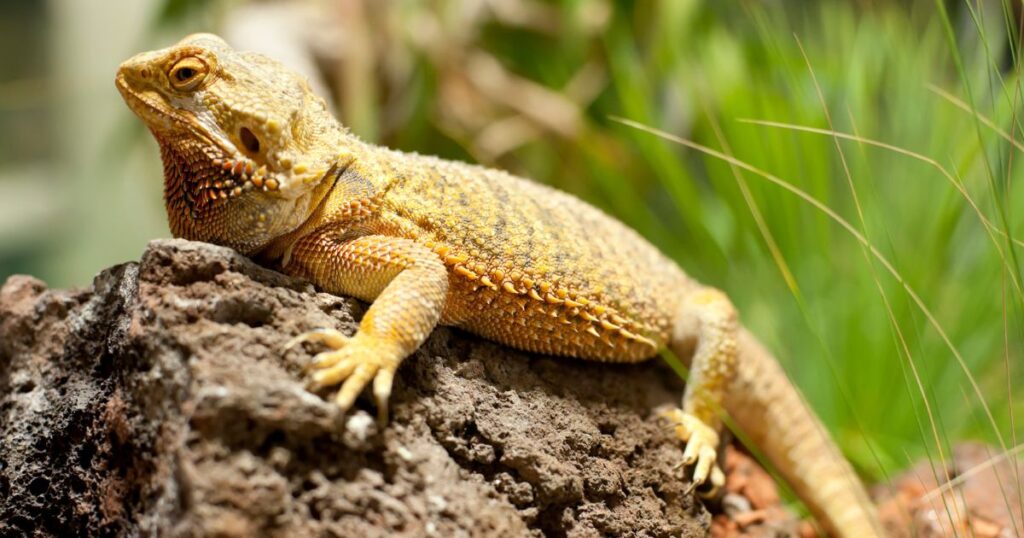
Feeding Schedule for Bearded Dragons
Understanding the feeding schedule of a bearded dragon is essential to ensure they receive the right amount of food at the right times. The feeding schedule varies depending on the age of the dragon. It’s important to adjust the portion sizes and feeding frequency for bearded dragons as they grows from a baby to an adult. Learn more about the feeding schedule for bearded dragons.
Feeding Schedule by Age
| Age | Insects | Vegetables |
|---|---|---|
| Baby (0-3 months) | 3 times a day | Daily |
| Juvenile (3-12 months) | 2 times a day | Daily |
| Adult (12+ months) | Once a day | Daily |
Feeding Baby Bearded Dragons
Baby bearded dragons require more frequent feedings due to their rapid growth. They need a diet rich in protein to support their development. It’s crucial to provide them with small, easily digestible insects and finely chopped vegetables. Learn more about feeding baby bearded dragons.
Feeding Juvenile Bearded Dragons
As they grow, the feeding schedule for juvenile bearded dragons changes. They still require a high protein diet, but the ratio of vegetables in their diet should increase. It’s also a good time to introduce a wider variety of foods to their diet. Learn more about feeding juvenile bearded dragons.
Feeding Adult Bearded Dragons
Adult bearded dragons have different dietary needs and feeding schedules compared to their younger counterparts. Their diet should consist of more vegetables and fewer insects, and they should be fed less frequently. It’s also important to monitor their weight and adjust their diet accordingly to prevent obesity. Learn more about feeding adult bearded dragons.
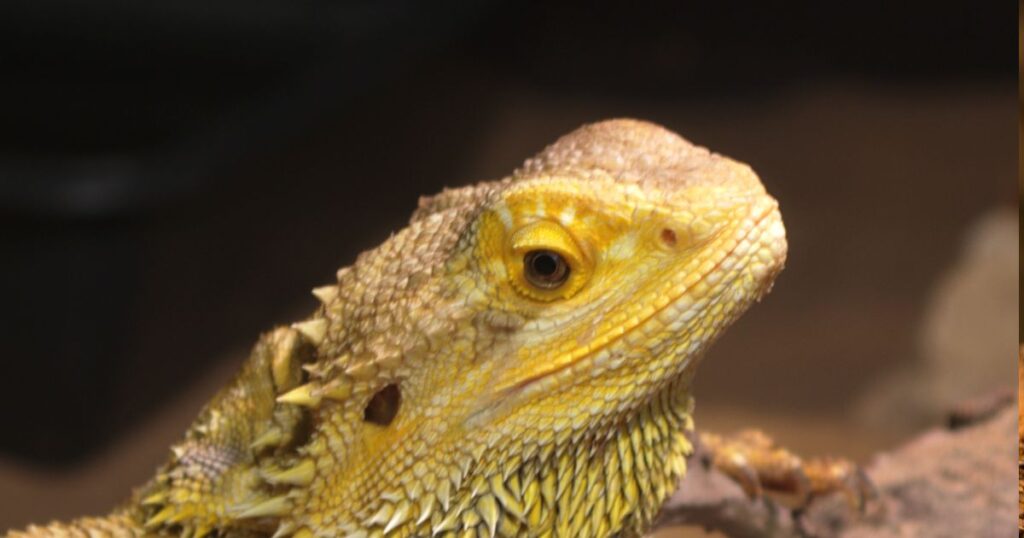
Best Live Insects for Bearded Dragons
Live insects form a significant part of a bearded dragon’s diet. Some of the best live insects for bearded dragons include crickets, mealworms, and roaches. However, it’s essential to gut-load these insects for optimal nutrition. Gut-loading involves feeding nutritious foods to the insects before they are fed to the bearded dragon, thereby enhancing their nutritional value. Discover the best live insects for bearded dragons.
Nutritional Content of Common Bearded Dragon Foods
| Food | Protein | Fat | Fiber | Calcium |
|---|---|---|---|---|
| Crickets | 21% | 6% | 3% | 14mg/100g |
| Mealworms | 20% | 13% | 2% | 13mg/100g |
| Collard Greens | 3% | 0.4% | 4% | 232mg/100g |
Top 5 Insects for Bearded Dragons
- Crickets
- Mealworms
- Roaches
- Waxworms
- Silkworms
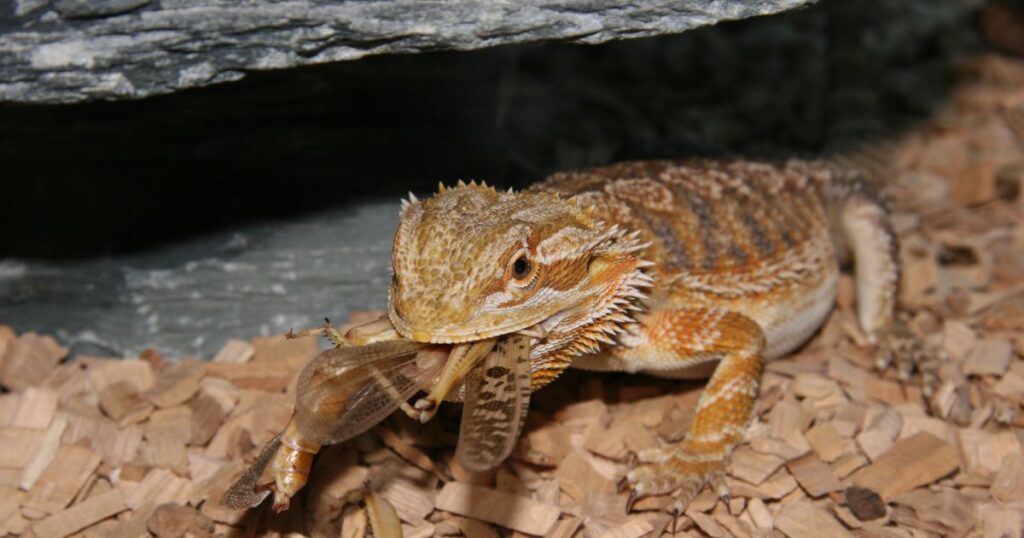
Vegetables and Greens for Bearded Dragons
Vegetables and greens provide necessary vitamins and minerals that contribute to a balanced diet. Some suitable options include collard greens, bell peppers, and squash. These should be chopped into small, manageable pieces and offered fresh to your bearded dragon. Remember to rotate the vegetables you offer to provide a variety of nutrients. Explore the range of vegetables and greens suitable for bearded dragons.
Top 5 Vegetables for Bearded Dragons
- Collard Greens
- Butternut Squash
- Bell Peppers
- Bok Choy
- Zucchini
Fruits for Bearded Dragons
Fruits should only make up a small portion of a bearded dragon’s diet but can offer variety and hydration. Some safe fruits for bearded dragons include apples, peaches, and melons. Always remember to remove any seeds before feeding and offer fruits as a treat rather than a staple in their diet. Find out more about the fruits suitable for bearded dragons.
Top 5 Fruits for Bearded Dragons
- Apples
- Berries (strawberries, blueberries)
- Melon
- Peaches
- Pears
Commercial Diets and Supplements for Bearded Dragons
While fresh food is always the best option, commercial diets can also be a part of your bearded dragon’s diet. These diets are formulated to provide balanced nutrition and can be especially useful for picky eaters. Additionally, calcium and vitamin supplements are crucial for their health, especially for preventing metabolic bone disease, a common condition in captive bearded dragons. Learn more about commercial diets and supplements for bearded dragons.
Feeding Tips for Picky Eaters
Some bearded dragons can be picky eaters. There are various strategies you can use to encourage them to eat a variety of foods. These include offering a variety of foods, presenting food in different ways, and using feeding tools. Remember, patience is key when dealing with a picky eater. Check out our feeding tips for picky eaters.
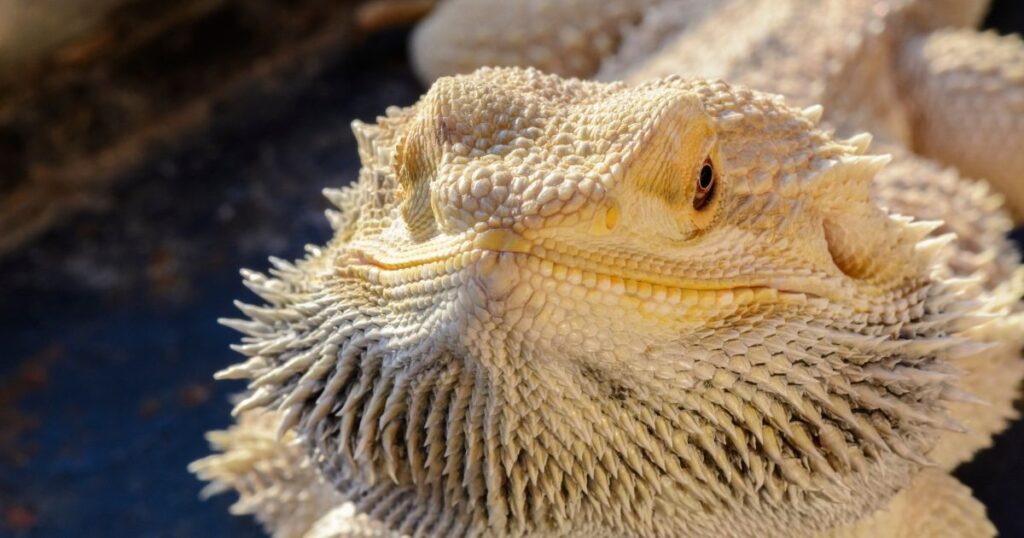
Seasonal Variations in Bearded Dragon Diet
Just like their wild counterparts, captive bearded dragons can also experience seasonal variations in their diet. Understanding these changes can help you provide the best care for your pet. For instance, bearded dragons may eat less during the cooler months when they undergo brumation, a form of hibernation. Learn more about seasonal variations in bearded dragon diet.
High-Protein Diet Options for Bearded Dragons
Protein is a crucial part of a bearded dragon’s diet, especially during their growth phase. High-protein diet options include a variety of insects such as crickets, mealworms, and roaches. It’s also important to ensure these insects are gut-loaded or dusted with a calcium and vitamin supplement to provide complete nutrition. Discover high-protein diet options for bearded dragons.
Nutritional Deficiencies and Their Symptoms in Bearded Dragons
Nutritional deficiencies can lead to various health problems in bearded dragons. Common deficiencies include calcium and vitamin D3, which can lead to metabolic bone disease, and vitamin A, which can cause eye problems. Recognizing the symptoms of these deficiencies can help you take action early and adjust your bearded dragon’s diet accordingly. Learn more about nutritional deficiencies and their symptoms in bearded dragons.
Signs of a Healthy Bearded Dragon
- Active and alert
- Clear eyes
- Healthy appetite
- Regular bowel movements
- Bright, even coloring
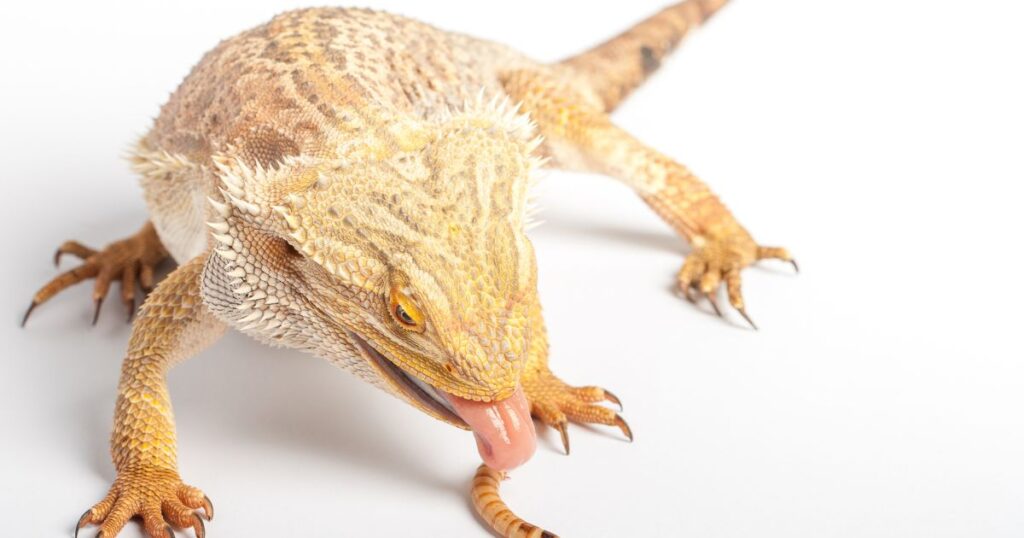
Preparing Homemade Diets for Bearded Dragons
Preparing homemade diets for your bearded dragon can be a rewarding experience. It allows you to control the quality of the ingredients and customize the diet to your bearded dragon’s preferences. However, it’s important to ensure the diet is balanced and meets all their nutritional needs. Learn more about preparing homemade diets for bearded dragons.
Proper Portion Sizes for Bearded Dragons
Overfeeding can lead to obesity and other health issues in bearded dragons. It’s important to provide the right portion sizes to keep your pet in good shape. The portion size depends on the age and size of your bearded dragon, as well as the type of food. Learn more about proper portion sizes for bearded dragons.
Remember, the healthier the insect, the healthier your bearded dragon will be.
Safe and Toxic Foods for Bearded Dragons
Not all foods are safe for bearded dragons. Some foods, like avocado and rhubarb, are toxic and should be avoided. Others, like spinach and beet greens, can interfere with calcium absorption and should be fed sparingly. It’s important to know which foods are safe and which are not to protect your bearded dragon’s health. Learn more about safe and toxic foods for bearded dragons.
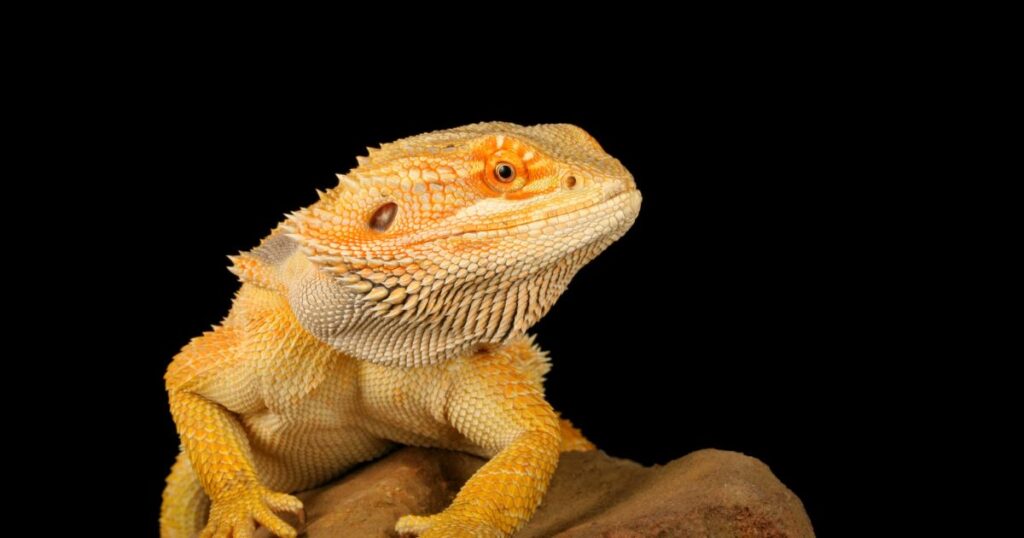
Feeding Insects Versus Feeding Vegetables
The balance between insects and vegetables in a bearded dragon’s diet changes as they grow. While baby and juvenile bearded dragons need a diet high in protein from insects, adult bearded dragons should eat more vegetables. Understanding this balance is key to providing a healthy diet. Learn more about feeding insects versus feeding vegetables.
Common Foods for Bearded Dragons
| Food Type | Examples | Frequency |
|---|---|---|
| Insects | Crickets, mealworms, roaches | Daily |
| Vegetables | Collard greens, bell peppers, squash | Daily |
| Fruits | Apples, berries, melon | Once a week |
Gut-Loading Insects for Optimal Nutrition
Gut-loading is a process where you feed nutritious food to the insects that are to be fed to your bearded dragon. This process enhances the nutritional value of the insects, ensuring your bearded dragon gets a nutrient-packed meal. The best foods for gut-loading insects include fresh fruits, vegetables, and high-quality commercial insect feeds. Remember, the healthier the insect, the healthier your bearded dragon will be. Learn more about gut-loading insects for optimal nutrition.
Gut-Loading Foods for Insects
| Food | Nutrients |
|---|---|
| Carrots | Vitamin A, Fiber |
| Apples | Vitamin C, Fiber |
| Spinach | Calcium, Iron |
Alfalfa Pellets for a Bearded Dragon?
Alfalfa pellets are often used as a substrate in bearded dragon enclosures, but their use as a food source is a topic of debate. While they are high in fiber and protein, they can also be hard to digest and may lead to impaction if eaten in large quantities. It’s always best to consult with a reptile vet or an experienced bearded dragon keeper before introducing new foods into your dragon’s diet. Learn more about alfalfa pellets for a bearded dragon.
Should Bearded Dragons Eat Mealworms?
Mealworms are a popular food choice for many reptile owners due to their high protein content. However, they also have a high-fat content and a tough outer shell, which can be difficult for bearded dragons to digest, especially for young ones. While they can be offered as an occasional treat, they should not form a significant part of a bearded dragon’s diet. Learn more about whether bearded dragons should eat mealworms.
From Bugs to Berries: Designing a Balanced Bearded Dragon Diet
Designing a balanced diet for your bearded dragon involves a mix of insects (bugs) and plant matter (berries, vegetables, and greens). The key is to provide a variety of foods to ensure they get a range of nutrients. For instance, insects provide protein and fats, while vegetables and fruits offer vitamins and fiber. Remember, the specific dietary needs can vary based on the age, health, and activity level of your bearded dragon. Learn more about designing a balanced bearded dragon diet.
A well-balanced diet is key to a healthy and happy bearded dragon.
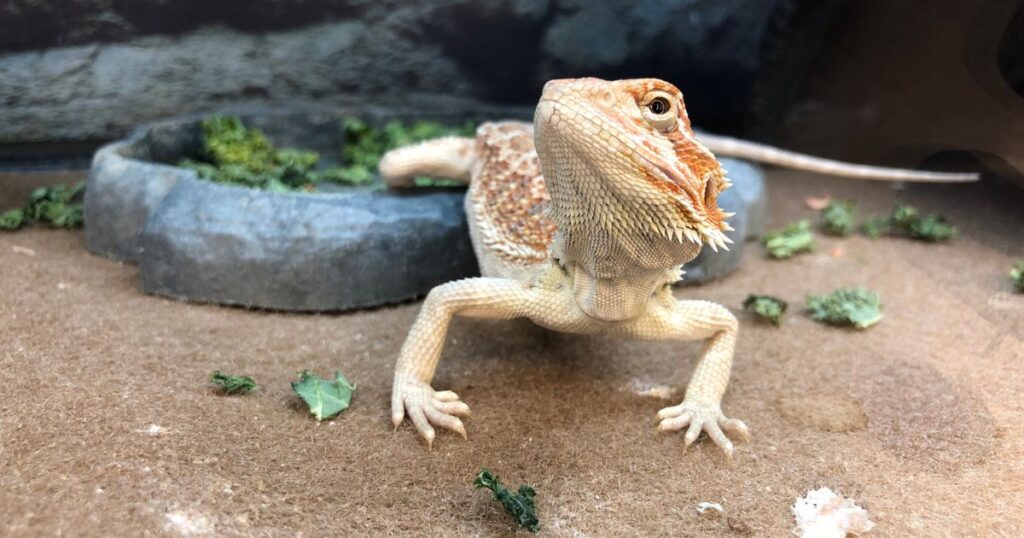
Conclusion
Understanding the dietary needs of a bearded dragon is a vital part of their care. By providing a balanced diet of insects, vegetables, and occasional fruits, you can ensure your bearded dragon thrives. Remember, every bearded dragon is unique, and what works for one might not work for another. Always monitor your dragon’s health and adjust their diet as needed. Happy feeding!
If you want to learn more about bearded dragon care, check out the Bearded Dragon Care category. And don’t forget to check out my index page on Bearded Dragon Diet. Happy dragon parenting!
